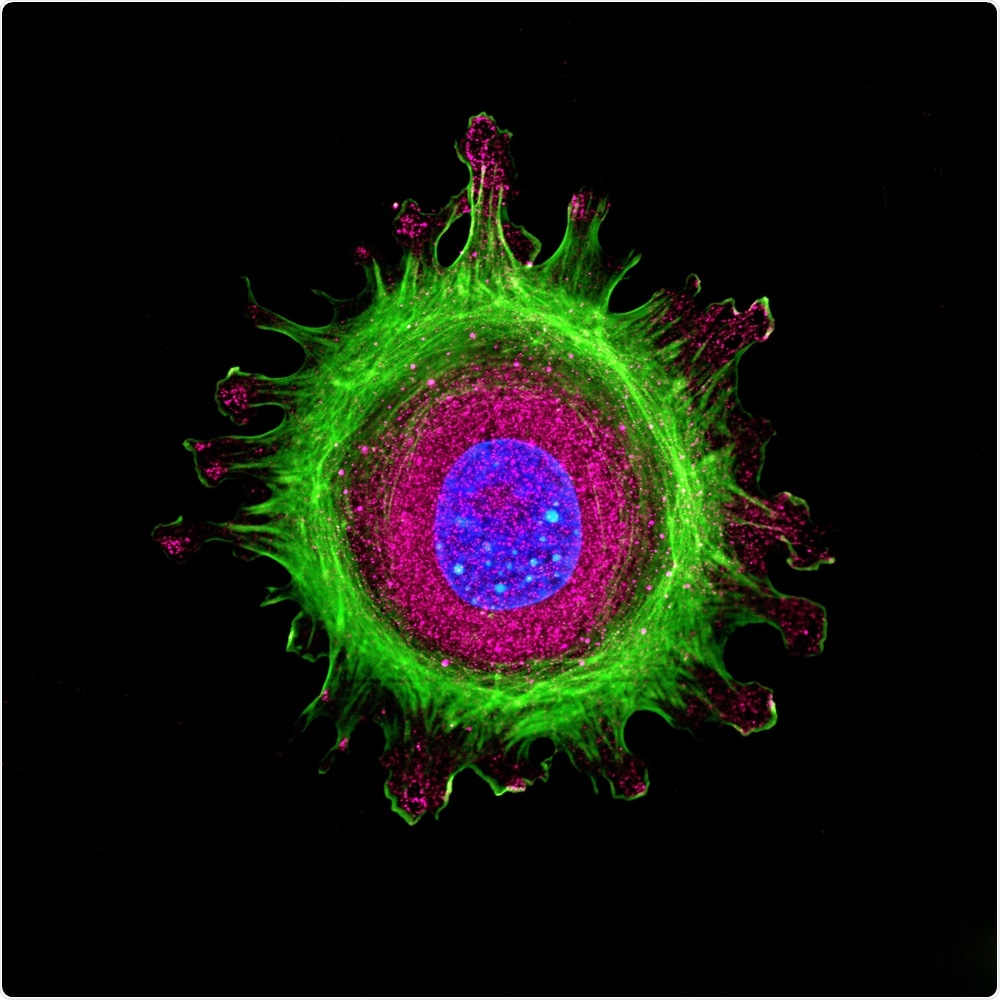Researchers at Harvard Medical School, Boston have proposed a new high-throughput, multigenerational time-lapse imaging platform, capable of single-cell screening, that addresses a major limiting factor in the development of current designs.

Image Credit: DrimaFilm/Shutterstock.com
The platform can accurately and reliably screen for complex phenotypes – a factor that has previously posed a challenge in gene library design and construction.
Using this new outfit, thousands of cell lineages per day can be characterized and complex phenotypes can be screened without requiring barcoding or genetic modifications.
The challenges
Genetic screening is an important tool in the field of biology for identifying the genetic elements that influence phenotype. However, the screens vary in power according to the complexity of the gene libraries, the properties that can be measured, how well growth conditions can be controlled and how reliable the phenotypic distributions are that get sampled for each genetic variation.
Currently, high-throughput single-cell screening is achieved with flow cytometry, but the method only provides endpoint information, which limits the ability to consider factors such as cellular growth, dynamic processes, and responses to environmental stimuli.
Furthermore, even non-dynamic processes cannot be properly characterized because the method is not effective at differentiating between hits that are mutants of interest and ones that have arisen from wild-type phenotypic outliers.
Droplet-based fluidics could potentially enable time-lapse monitoring; however, the monitoring of single growing cells is still challenging and important phenotypic features are missed due to low resolution.
Microscopy-based techniques hold more promise since they enable quantification of a wider range of phenotypes and tend to be much more accurate than flow cytometry-based techniques.
Such methods are often used to screen small libraries, especially the structured libraries that contain known mutants that can be linked to cellular compartments.
In an effort to extend the screening to unstructured libraries, researchers have tried using fluorescence in situ hybridization (FISH) to screen libraries tagged with genetic barcodes.
This did enable brief time-lapse screening and expanded genotype-to-phenotype correspondence. However, genetic barcoding into the libraries limits the properties that can be characterized because it requires physical linking to mutants of interest.
Single cells also cannot be analyzed downstream using techniques such as whole-genome sequencing because samples need to be fixed for genotyping.
What has the new study involved?
As reported in the journal Nature Methods, Johan Paulsson and colleagues have now presented a new method for isolating living cells following monitoring by multigenerational time-lapse microscopy – the SIFT (single-cell isolation following time-lapse imaging) method.
First, the team used a microfluidics platform that they say has become the most powerful tool for the long-term monitoring of cell lineages. Inside the platform, which is referred to as the “mother machine,” cells proliferate in thin trenches and are fed by a culture medium as progeny are washed away.
The device can individually isolate any cell after imaging without resulting in contamination or any genetic or physical perturbations.
By separating the screening process from the subsequent genotyping, our method allows users to take advantage of any independent improvements in microscopy, cell handling or sequencing, and gain the ability to evaluate mutants with single-nucleotide precision across the genome, without the need to prepare screen-specific strains or insert genetic barcodes.”
Researchers have recently used such platforms to simultaneously track thousands of cell lineages. The platform provides cell images for hundreds of consecutive generations every few minutes whilst tracking changes in growth, physiology and reporter proteins.
“The growth conditions are kept exceptionally uniform across and within lineages to ensure straightforward comparisons and can be changed on timescales of seconds to days to evaluate the same cells as they adjust to different media,” writes the team. “This allows for reliable estimation of the full distributions of a wide range of phenotypes associated with each genotype, by sampling those distributions hundreds of times rather than just once.”
After the team had imaged and tracked bacterial cells across tens of consecutive generations, cells of interest were isolated for downstream analysis.
The researchers then applied the SIFT method to identify extremely precise synthetic gene oscillators that would ensure only phenotypes of interest were observed and that quantitative comparison could be made between circuit variants.
What did the study find?
The team reports that the screens produced by SIFT are to their knowledge the most regular set of synthetic oscillators built to date, with circuits showing periods that ranged from just over half a generation to almost 20 generations.
“SIFT thus addresses a critical limiting factor in the directed evolution of synthetic network design: accurately and reliably screening complex phenotypes, a step which has lagged far behind library design and construction advancements over the past decade,” writes the team.
Paulsson and team say their work demonstrates a powerful imaging platform, capable of high throughput, multigenerational, time-lapse imaging under tightly controlled growth conditions, with single-cell screening capabilities.
We believe the ability to track complex and long-term spatiotemporal dynamics across mutant lineages at high throughput and within controlled environments, combined with the ability to accurately retrieve cells of any kind for downstream analysis without barcoding, could revolutionize genetic screens for a wide range of processes and cell types,”
Journal reference:
Luro S et al. Isolating live cells after high-throughput, long-term, time-lapse microscopy. Nature Methods 2020;17:93-100